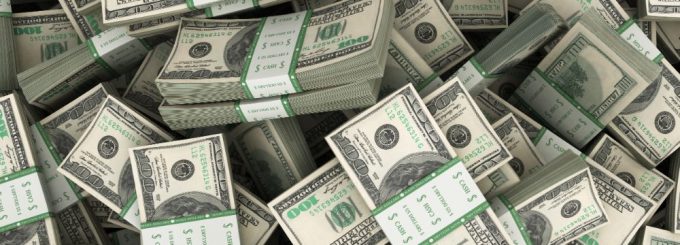The 6 Most Important Large American Currency Notes

There are six major large American currency notes that have been used throughout the nation’s history. Knowing these bills and the differences between them will make it easier for currency enthusiasts to find the perfect notes for their collections.
Legal Tender Notes
Also referred to as U.S. notes, these bills were first issued in 1862 and comprised denominations which ranged from $1 to $10,000, though it is next to impossible to find bills with a face value over $100 today. U.S. notes display a red colored seal and were considered legal tender for every debt, be it private or public. Bills from this era are prized for their iconic design, especially the $5 Woodchopper and $10 Bison. George Washington first appeared on the $1 bill during this period, and has remained there until the present day.
National Bank Notes
This extensive series started in 1863, at a time when chartered banks were able to print their own bills. Technically the notes were designed and produced through the Bureau of Engraving and Printing, which is a government agency, and this explains why these private notes are so similar to official government issues. Thousands of banks existed at the time around the country, and due to the passage of time finding some of them will be extremely difficult. National bank notes will display either a brown, red or blue seal.
Silver Certificates
These bills were authorized by Congressional acts signed between 1878 and 1886 at a time when the U.S. was on the silver standard. It is a long and extensive series which came with the obligation that for each bill there had to be a specific amount of silver stored at the U.S. Treasury which the bills could be redeemed for. Some of the most popular designs from this era include the $10 Tombstone, Indian $5 note and the $5 Porthole Lincoln. Silver certificates were circulated throughout the United States until the 1960s.
Demand Notes
These notes were issued between 1861 and 1862, and are also referred to as Greenbacks. They are distinct from other large bills because there is only a single serial number on it, and they don’t display the U.S. Treasury Seal. Only 3 denominations were issued and due to the passage of time have become exceptionally rare.
Treasury Notes
These are also called Coin Notes and were authorized via the 1890 Legal Tender Act. It is one of the more short lived issues and was backed by coins, although their metallic content was up to the discretion of the Treasury Secretary. These notes are highly coveted by collectors, especially the Watermelon reverse which is found on $100 to $1,000 notes.
Gold Certificates
These are arguably the most beautiful notes ever produced in the United States. They were issued during the time when the nation was on the gold standard and consist of denominations starting at $10. They display a lovely orange/gold reverse and could be redeemed for gold up until 1933.


